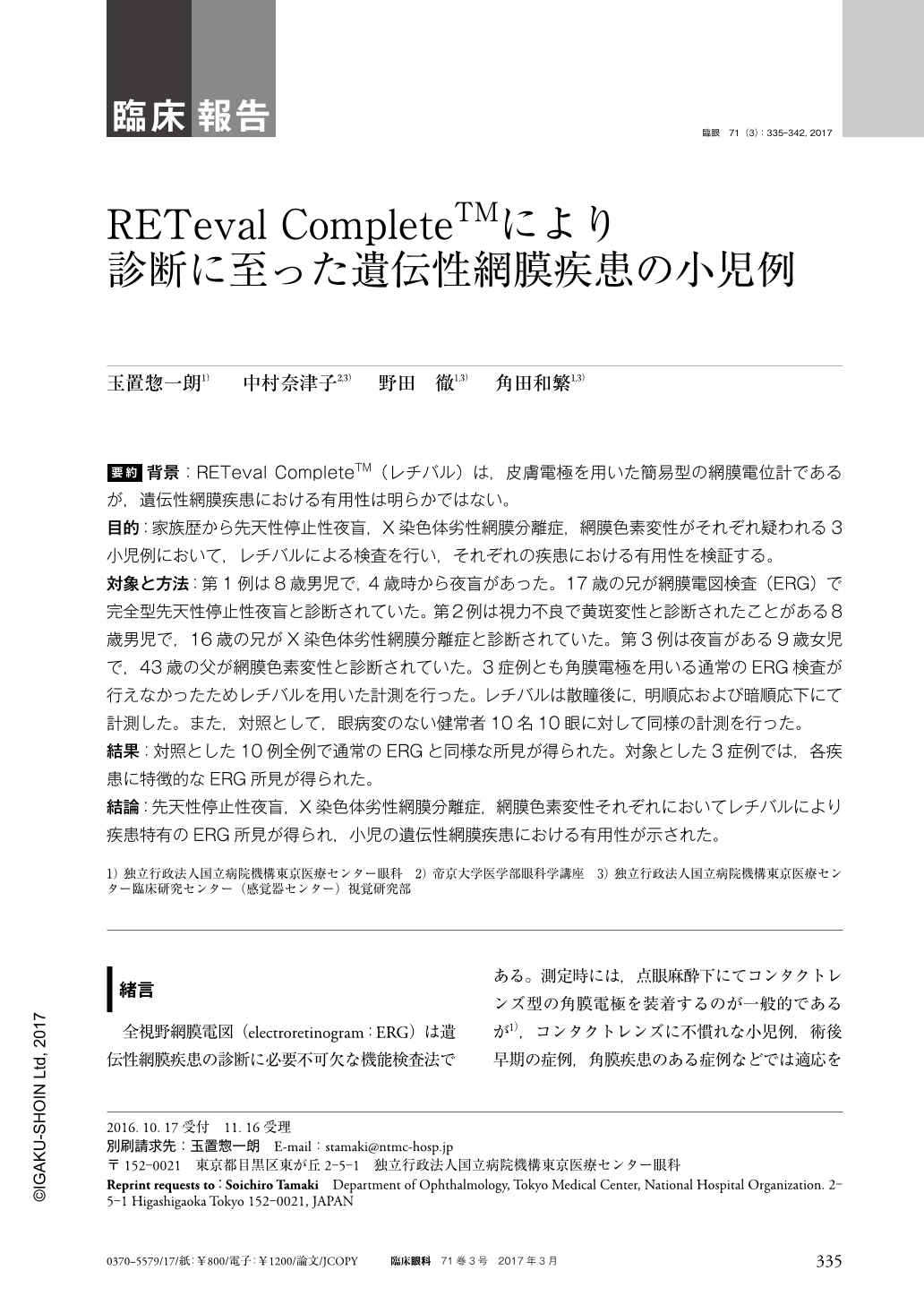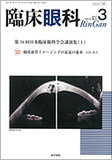Japanese
English
- 有料閲覧
- Abstract 文献概要
- 1ページ目 Look Inside
- 参考文献 Reference
要約 背景:RETeval CompleteTM(レチバル)は,皮膚電極を用いた簡易型の網膜電位計であるが,遺伝性網膜疾患における有用性は明らかではない。
目的:家族歴から先天性停止性夜盲,X染色体劣性網膜分離症,網膜色素変性がそれぞれ疑われる3小児例において,レチバルによる検査を行い,それぞれの疾患における有用性を検証する。
対象と方法:第1例は8歳男児で,4歳時から夜盲があった。17歳の兄が網膜電図検査(ERG)で完全型先天性停止性夜盲と診断されていた。第2例は視力不良で黄斑変性と診断されたことがある8歳男児で,16歳の兄がX染色体劣性網膜分離症と診断されていた。第3例は夜盲がある9歳女児で,43歳の父が網膜色素変性と診断されていた。3症例とも角膜電極を用いる通常のERG検査が行えなかったためレチバルを用いた計測を行った。レチバルは散瞳後に,明順応および暗順応下にて計測した。また,対照として,眼病変のない健常者10名10眼に対して同様の計測を行った。
結果:対照とした10例全例で通常のERGと同様な所見が得られた。対象とした3症例では,各疾患に特徴的なERG所見が得られた。
結論:先天性停止性夜盲,X染色体劣性網膜分離症,網膜色素変性それぞれにおいてレチバルにより疾患特有のERG所見が得られ,小児の遺伝性網膜疾患における有用性が示された。
Abstract Purposes: To determine whether a new hand-held, portable ERG device, RETeval CompleteTM, can be used to evaluate retinal function of children.
Patients and methods: Three children from three families (Case 1; 8-year-old boy, Case 2; 8-year-old boy and Case 3; 9-year-old girl) who were intolerant to contact lens electrodes were recruited. One of their family members had been already diagnosed as hereditary retinal diseases, i.e., complete congenital stationary night blindness (cCSNB, Case 1), X-linked retinoschisis (XLRL, Case 2) and retinitis pigmentosa (RP, Case 3), by conventional ERG measurement with contact-lens electrodes. The light- and dark-adapted ERGs were recorded with the RETevalTM under dilated conditions with skin electrodes, and responses were compared with 10 eyes of 10 healthy controls.
Results: The results of controls by the RETevalTM were compatible to those by the conventional ERG method. In the three cases, the results of RETevalTM showed characteristic features of cCSNB, XLRS and RP, respectively.
Conclusions: The RETevalTM has a potential to evaluate retinal function under both scotopic and photopic conditions with dilated pupils, especially for patients who are intolerant to contact lens electrodes.

Copyright © 2017, Igaku-Shoin Ltd. All rights reserved.


